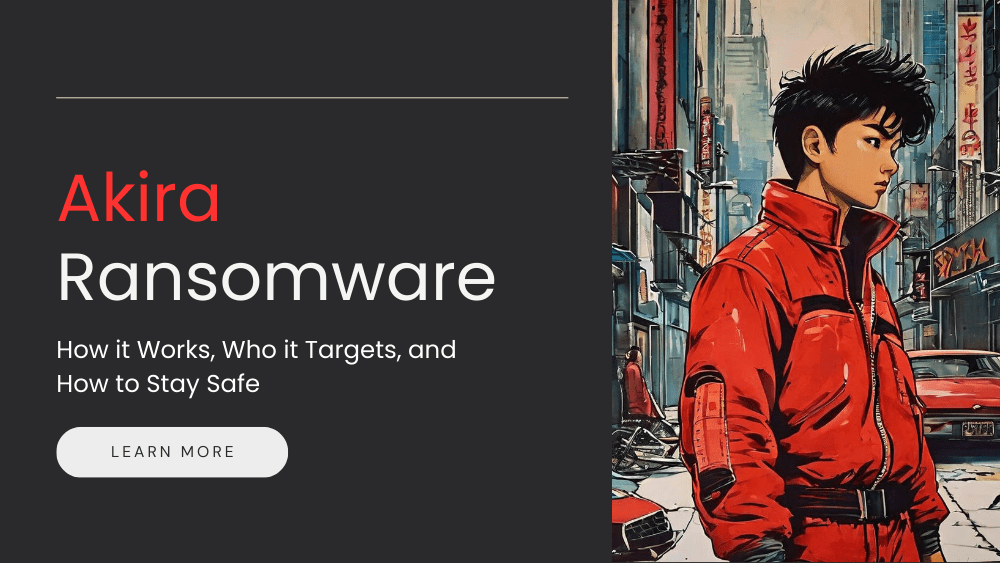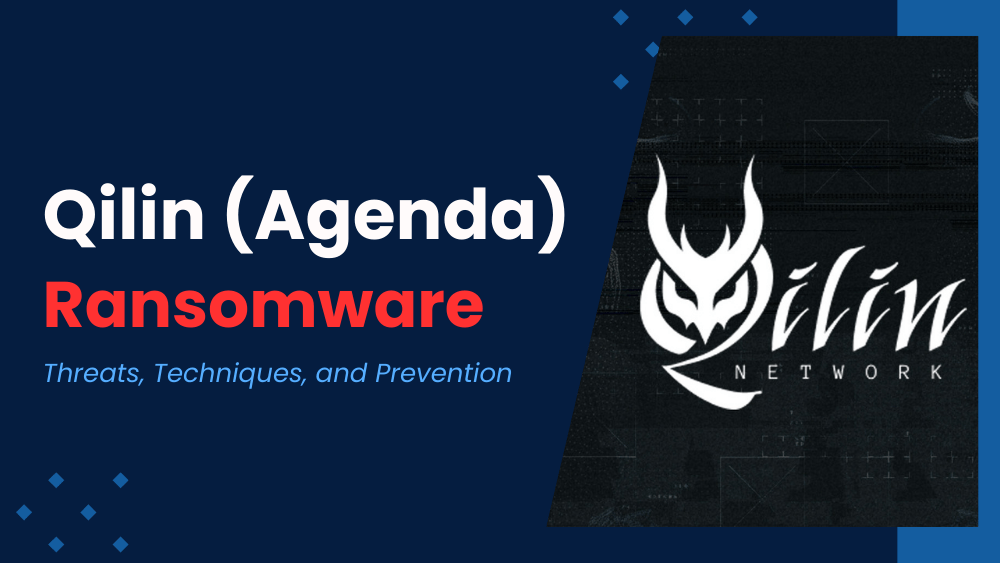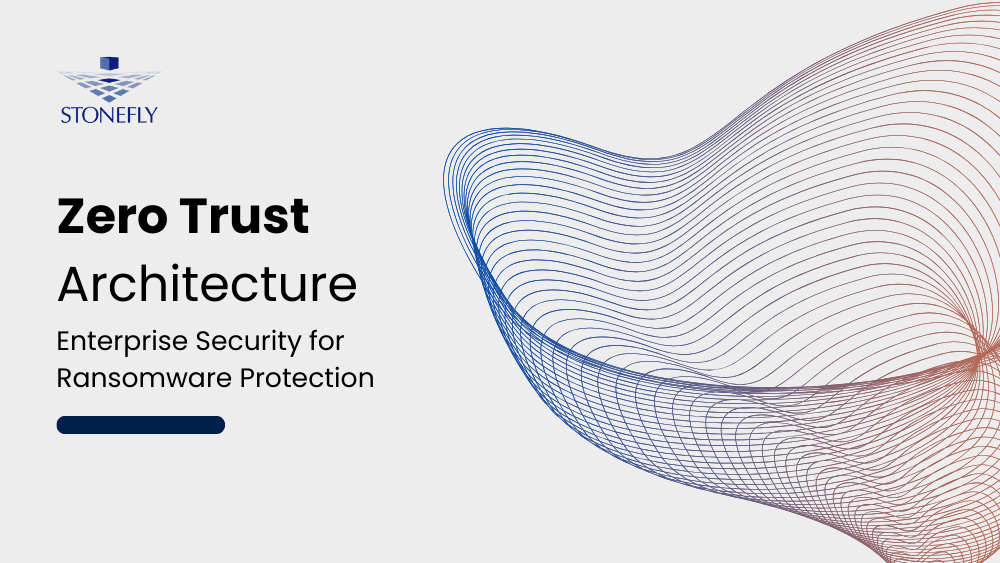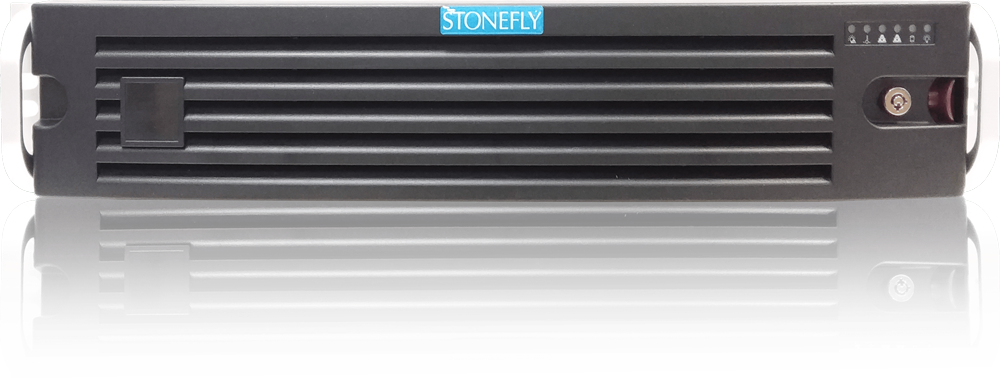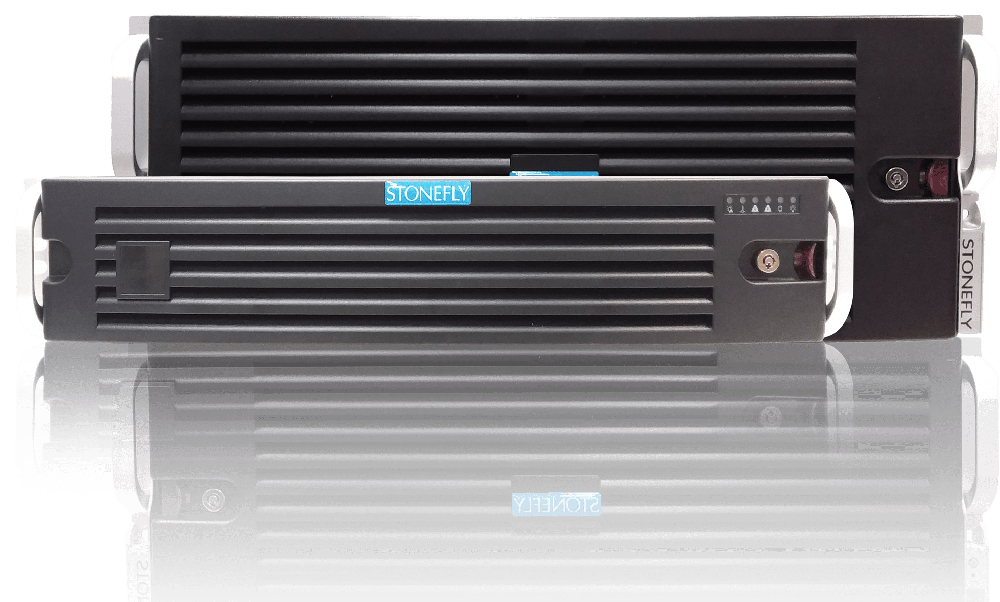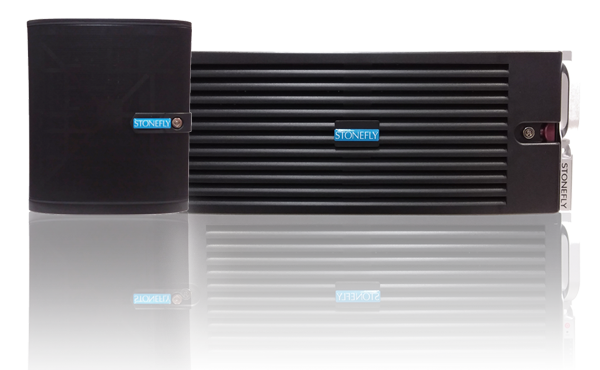Ransomware continues to evolve, with new strains emerging seemingly every day. One such threat, Akira ransomware, stands out not just for its sophisticated tactics and ruthless approach, but also for its unexpected aesthetic. Evoking a sense of nostalgia with its 1980s anime-inspired graphics, Akira belies a potent threat specifically designed to cripple enterprise environments. We’ll explore how it infiltrates systems, encrypts data, and utilizes the now-common double extortion tactic.
This information equips you, the security professional, with the knowledge to assess the potential impact of an Akira attack on your organization. We’ll discuss the potential consequences, from data loss to operational disruption. Most importantly, we’ll provide actionable steps you can take to fortify your defenses and keep Akira ransomware at bay.
How Akira Ransomware Breaches and Extorts Businesses
Akira ransomware has established itself as a formidable threat, particularly for enterprise environments. Here, we dissect its attack methods, highlighting its ability to cripple business operations:
Infection Vectors: Phishing and Exploiting Weaknesses
- Phishing Campaigns: Akira actors leverage social engineering tactics to gain a foothold in your network. They craft deceptive phishing emails that impersonate trusted sources or exploit current events. These emails often contain malicious links or attachments designed to deploy the ransomware upon clicking. (https://www.cisa.gov/)
- Exploiting Unpatched Systems: Akira demonstrates a focus on exploiting vulnerabilities in commonly used software. The FBI and CISA have specifically warned about Akira’s targeting of unpatched Cisco VPN vulnerabilities (CVE-2020-3259 and CVE-2023-20269). Organizations that haven’t implemented multi-factor authentication (MFA) on their VPN services are at greater risk. (https://www.cisa.gov/)
Double Extortion: A Devastating Tactic
Once initial access is established, Akira employs a double extortion tactic, inflicting maximum damage. Here’s how it operates:
- Data Lockdown with Encryption: Akira utilizes strong encryption algorithms like ChaCha2008 or a combination of AES and RSA to encrypt critical business data on compromised systems. This renders the data inaccessible, causing significant operational disruption and stalling business functions. (https://www.provendata.com/blog/akira-ransomware/) Note: Specific details on encryption algorithms used by Akira are not always publicly available.
- Data Exfiltration: Adding Fuel to the Fire: To heighten the pressure, Akira exfiltrates sensitive data before encryption. This stolen data could include financial records, intellectual property, or personally identifiable information (PII) of employees or customers. The attackers then threaten to leak or sell this sensitive data on the dark web if the ransom demand isn’t met.
Crippled Systems, Stolen Data: The Devastating Impact of Recent Akira Ransomware Attacks
Recent events paint a chilling picture of the far-reaching consequences of Akira ransomware attacks. Here’s a look at some developments that highlight Akira’s growing threat:
- Critical Infrastructure Targeted: A US energy services firm bravely came forward in March 2024 to share details of their encounter with Akira in June 2023. The attackers exploited stolen VPN credentials to infiltrate the company’s network, showcasing their ability to target critical infrastructure beyond traditional businesses. This incident also sheds light on Akira’s double extortion tactic – not only encrypting data but also stealing it before making ransom demands. Leaked sensitive information from critical infrastructure providers can have a ripple effect, causing widespread disruption and jeopardizing public safety.
- Data Breaches and Reputational Damage: The impact of Akira extends beyond operational disruption. News in March 2024 confirmed a data breach at Nissan, a major car manufacturer, potentially linked to a December 2023 Akira attack. This incident involving over 100,000 individuals exemplifies the reputational damage caused by Akira. Leaked customer information can severely erode trust and brand image for affected organizations. This emphasizes the importance of robust data security practices to prevent breaches and mitigate the fallout from such attacks.
- Widespread Reach and Financial Losses: The FBI issued a stark warning in January 2024, highlighting Akira’s expansive reach. Their advisory revealed that the group has targeted over 250 organizations, including critical infrastructure entities and businesses across various sectors. This widespread targeting has resulted in an estimated $42 million in ransom payments collected by Akira. These statistics underscore the significant financial losses organizations face due to ransomware attacks, further emphasizing the need for proactive defense measures.
How to Protect Your Organization from Akira Ransomware Attacks
Akira ransomware poses a significant threat, but there are steps you can take to fortify your defenses and minimize potential damage. Here’s a comprehensive approach to protecting your organization:
Prevention: Building a Wall Against Attackers
- Strong Passwords and Multi-Factor Authentication (MFA): Enforce strong password policies that require complex combinations of characters. Implement MFA wherever possible, adding an extra layer of security beyond just a password. This additional verification step, like a code sent to your phone, significantly reduces the risk of unauthorized access even if an attacker steals a password.
- Patching Vulnerabilities: Keeping Your Software Up-to-Date: Unpatched software vulnerabilities are a common entry point for ransomware. Regularly update your operating systems, applications, and firmware on all devices to address known vulnerabilities. Prioritize patching critical systems and those most at risk, such as VPNs and remote access tools.
- Educating Employees: Recognizing Phishing Attempts: Employees are often the first line of defense against phishing attacks. Train employees on how to identify suspicious emails, including recognizing spoofed sender addresses, checking for grammatical errors, and avoiding clicking on untrusted links or attachments. Regularly conduct phishing simulations to test employee awareness and identify areas for improvement.
Data Backups: Your Safety Net in Case of a Ransomware Attack
- Regular Backups: The Foundation of Recovery: Regular data backups are crucial for recovering from a ransomware attack. Implement a backup schedule that ensures all critical data is backed up frequently – daily or even more often for sensitive information.
- Air-Gapped and Immutable Backups: The Ultimate Defense: Take your backups a step further with air-gapped and immutable backups. Air-gapped backups are physically isolated from your network, making them inaccessible to ransomware that infiltrates your system. Immutable backups, on the other hand, ensure data cannot be modified or encrypted, even by attackers who gain access to your backup storage. Combining these two features creates a robust and secure backup solution that allows you to recover clean, uncompromised data after an attack.
- The 3-2-1 Backup Rule: A Robust Strategy: For a well-rounded backup strategy, consider the 3-2-1 rule:
- Maintain 3 copies of your data: This redundancy ensures you have multiple copies in case of accidental deletion or hardware failure.
- Store data on 2 different media types: Utilize a combination of hard drives, solid-state drives, or cloud storage to minimize the risk of losing data due to a single point of failure.
- Keep 1 copy offsite: Store at least one backup copy in a physically separate location, ideally offsite, to protect it from events like fire or natural disasters.
Detection and Response: Being Prepared to React
- Security Software with Ransomware Detection: Invest in security software with built-in ransomware detection capabilities. These tools can monitor system activity and identify suspicious behavior that might indicate a ransomware attack. Early detection allows you to take swift action and potentially mitigate the damage.
- Data Recovery Plan: Knowing What to Do When Attacked: Develop a data recovery plan that outlines the steps to take in case of a ransomware attack. This plan should include procedures for isolating infected systems, restoring data from backups, and communicating with relevant authorities. Regularly test your data recovery plan to ensure its effectiveness.
What NOT to Do in the Face of an Akira Ransomware Attack
- Paying the Ransom: Paying the ransom fuels criminal activity and doesn’t guarantee data recovery. There is no way to be certain attackers will provide a decryption key after receiving payment.
- Ignoring the Attack: Report a ransomware attack to the relevant authorities, such as law enforcement and cybersecurity agencies. This helps track attacker activity, potentially aid in future investigations, and deter future attacks.
Conclusion
Akira ransomware has established itself as a formidable threat, particularly for enterprises. Its double extortion tactic, combining data encryption with exfiltration, elevates the potential damage beyond operational disruption. Recent attacks demonstrate the expanding reach of Akira, targeting critical infrastructure and causing widespread disruption.
However, organizations are not powerless. By prioritizing strong password policies and multi-factor authentication, staying vigilant against phishing attempts, and patching software vulnerabilities, you can significantly reduce the attack surface. Regularly backing up data, with a focus on air-gapped and immutable backups, provides a vital safety net in case of an attack. Implementing security software with ransomware detection and having a well-defined response plan are crucial for swift reaction and damage control.
Don’t let Akira ransomware hold your business hostage. StoneFly’s Veeam ready air-gapped and immutable backup and DR appliance offers the ultimate defense against ransomware attacks. Learn more about how StoneFly’s solutions can safeguard your data and ensure seamless recovery in the face of an attack: https://stonefly.com/backup/dr365-for-veeam
